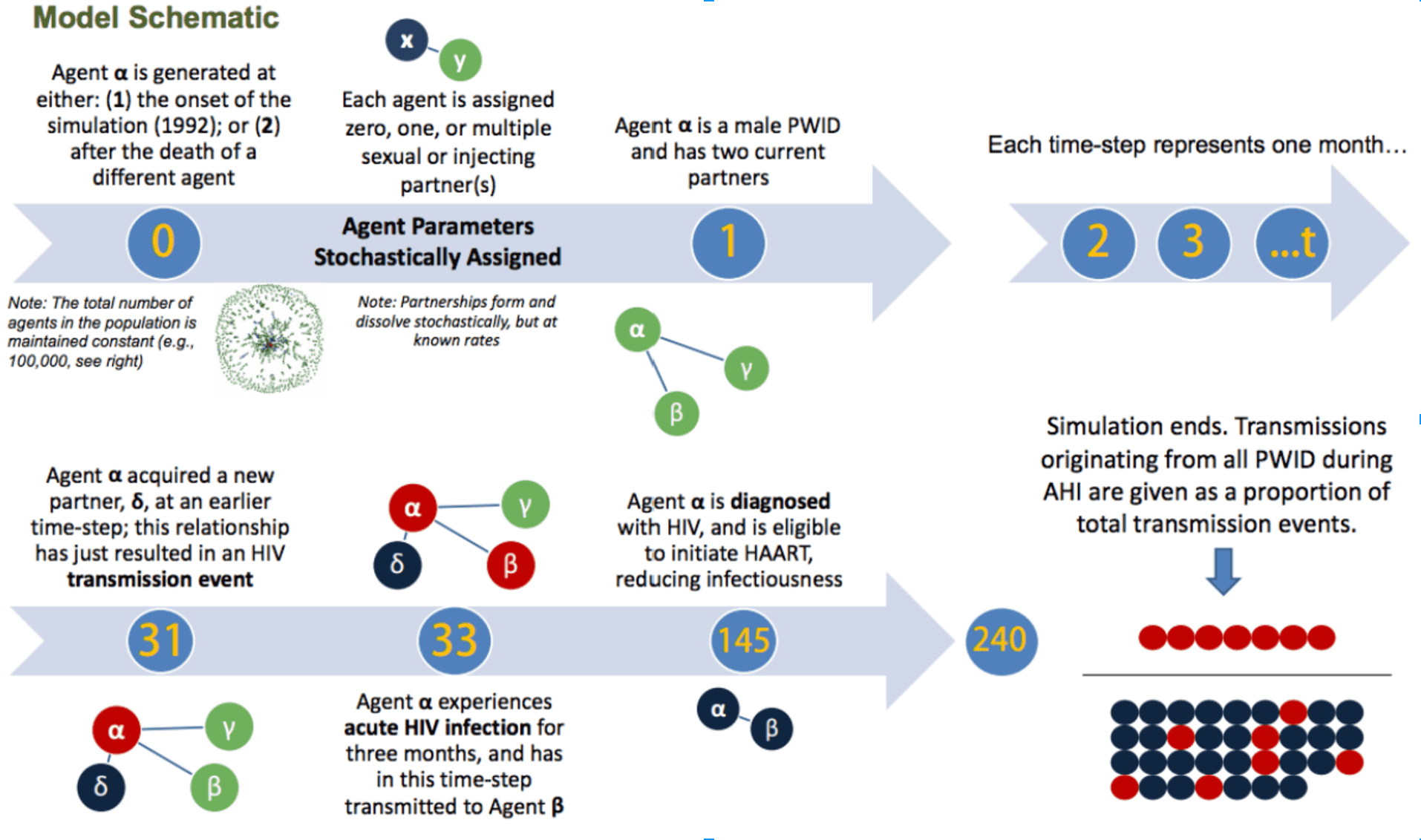How do we use ABM?
Our model, TITAN, is coded in Python 2.7 and amounts to around 8,000 lines of code. A concise description of the model follows, TITAN is an agent-based simulation model used to explore contact transmission in complex social networks. Our team uses ABM to model the spread of disease and its reaction to public health interventions. The end goal of our team’s research is to guide the implementation of highly effective HIV prevention strategies that are more efficient, better targeted, and more responsive to the needs of risk groups.
Subjects our team focuses on include:
- Modelling HIV interventions, such as Pre-Exposure Prophylaxis, Needle Sharing Programs, and HAART
- Informing targeted responses to the opioid epidemic
- Identifying interventions to reduce racial disparities
TITAN Model Road Map
Below is a sample, step-by-step walkthrough of how our team uses ABM to track how agents develop relationships, contract HIV and/or adhere to HAART. Our model was developed specifically to track acute HIV infection (AHI).

Why do we use ABM?
Why did we choose Agent-Based Modelling over other model types?
TITAN model was built to construct and analyze how infectious diseases interact with a population and to guide the implementation of HIV prevention strategies. Below we discuss both what makes TITAN strong and the weaknesses we keep in mind.
ABM Pros
Suitable for Network Studies
The spread of HIV depends on the social/sexual network the disease inhabits; a disease moves differently through large city than through a small, rural town. Therefore, models that investigate HIV must build an accurate representation of that network. Agent-Based models form networks well because they randomly build the network from the ground up, based on all of the agents’ characteristics.
Chance to Observe Multiple Interventions at Once
Agent-Based Modelling allows for impact evaluation of adjusting multiple interventions at once. Our goal is to identify the best combination of two available treatments that would lead to wiping out the HIV epidemic.
Insights into the Variability of the Real World
ABMs are typically stochastic (randomly determined). Stochasticity is an asset: observing variability can lend insights into the variability of the real-world. This means that the model must be run over and over to produce macro-level trends from micro-level actions, to make sense of the “noise.”
ABM Cons
Sensitive to Initial Conditions
ABMs rely on the accuracy of input values (or “initial conditions”) for accurate answers to the questions we ask. ABMs are not set up to self-correct if the inputs are slightly off; if the inputs are incorrect, then the outputs will often diverge from the true values.
Slower to Run and Calibrate
The run time for ABMs is often longer than other model options. Even though creating the network from the ground up is one of ABMs’ strengths, it also causes the model to take longer to run.
Trouble Giving Detailed Predictions
Because of the stochastic nature of micro processes, ABMs are not well suited for detailed predictions, but they can be used to examine the range of system effects an intervention or change in policy might be expected to have. There is tension to make ABMs both simple enough to yield useful insights and complex enough not to misrepresent what is going in the real world.